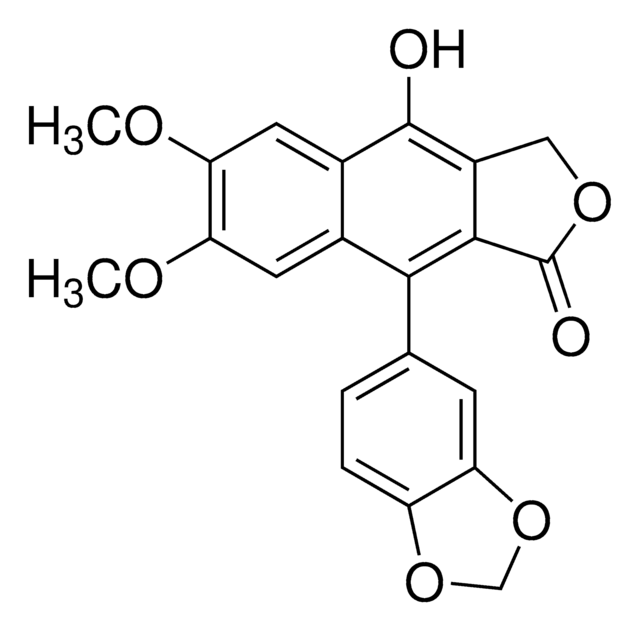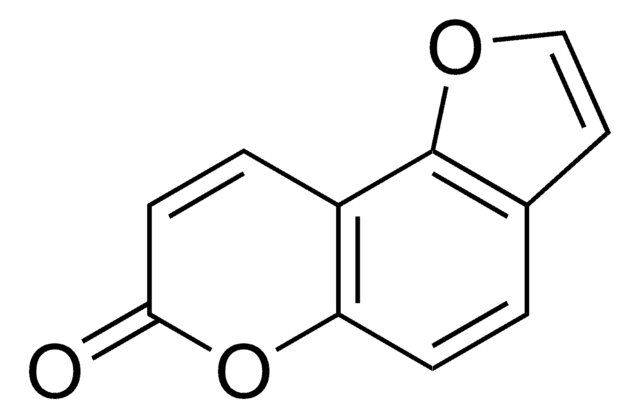SML0932
Psoralidin
≥98% (HPLC)
Sinônimo(s):
3,9-Dihydroxy-2-(3-methyl-2-butenyl)-6H-benzofuro[3,2-c][1]benzopyran-6-one, 3,9-Dihydroxy-2-prenylcoumestan
About This Item
Produtos recomendados
Ensaio
≥98% (HPLC)
forma
powder
cor
white to beige
solubilidade
DMSO: 5 mg/mL, clear (warmed)
temperatura de armazenamento
−20°C
cadeia de caracteres SMILES
CC(C)=CCC1=C(C=C(OC2=O)C(C(OC3=C4)=C2C3=CC=C4O)=C1)O
InChI
1S/C20H16O5/c1-10(2)3-4-11-7-14-17(9-15(11)22)25-20(23)18-13-6-5-12(21)8-16(13)24-19(14)18/h3,5-9,21-22H,4H2,1-2H3
chave InChI
YABIJLLNNFURIJ-UHFFFAOYSA-N
Procurando produtos similares? Visita Guia de comparação de produtos
Ações bioquímicas/fisiológicas
Características e benefícios
Palavra indicadora
Warning
Frases de perigo
Declarações de precaução
Classificações de perigo
Acute Tox. 4 Oral
Código de classe de armazenamento
11 - Combustible Solids
Classe de risco de água (WGK)
WGK 3
Ponto de fulgor (°F)
Not applicable
Ponto de fulgor (°C)
Not applicable
Certificados de análise (COA)
Busque Certificados de análise (COA) digitando o Número do Lote do produto. Os números de lote e remessa podem ser encontrados no rótulo de um produto após a palavra “Lot” ou “Batch”.
Já possui este produto?
Encontre a documentação dos produtos que você adquiriu recentemente na biblioteca de documentos.
Conteúdo relacionado
Apoptosis, or programmed cell death (PCD), is a selective process for the removal of unnecessary, infected or transformed cells in various biological systems. As it plays a role in the homeostasis of multicellular organisms, apoptosis is tightly regulated through two principal pathways by a number of regulatory and effector molecules.
Nossa equipe de cientistas tem experiência em todas as áreas de pesquisa, incluindo Life Sciences, ciência de materiais, síntese química, cromatografia, química analítica e muitas outras.
Entre em contato com a assistência técnica









